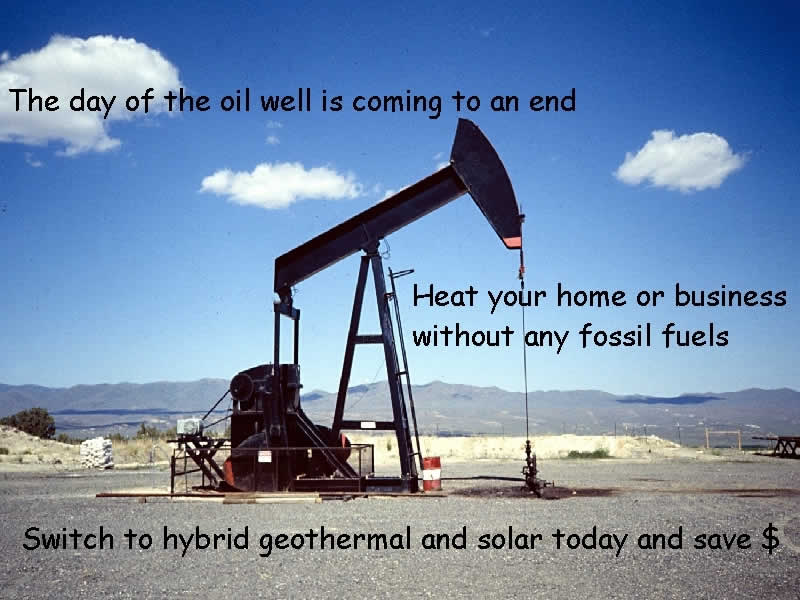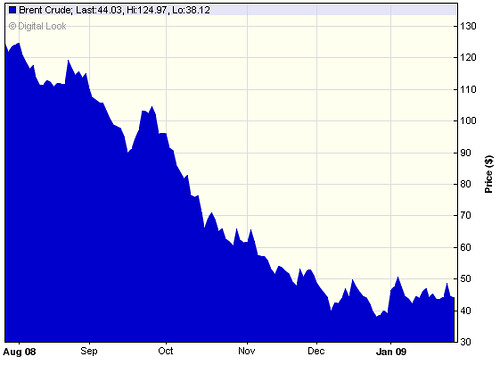(Source: AP via Yahoo & DC-ist)

Image Courtesy: www.EdwardBurtynsky.com - Click the image to see more pictures
The first exhibit of 56 large-scale color landscapes from Canadian photographer Edward Burtynsky chronicling the impact of oil made its debut Saturday at Washington’s Corcoran Gallery of Art — less than a block from the White House. The show, chronicling the world’s predominant energy source, can’t help carrying a political zing.
“Edward Burtynsky: Oil,” opens at the privately funded museum as Congress is struggling with a climate bill that could include a “cap and trade” system to reduce greenhouse gases. Critics say it could drive up energy costs.
“We hoped that there would be something going on around oil,” curator Paul Roth said of the museum’s plans for the exhibit beginning two years ago. “At a certain point, we realized, no, it’s Washington and it’s oil. There will be something going on.”

Burtynsky spent 12 years exploring the subject, following past projects on mines, quarries and farming. The images are divided thematically to show how oil is extracted from the earth and how it drives transportation and development. It ends with a frightening thought — the end of oil. Some of the most striking images depict the abandoned, rusting oil fields of Azerbaijan in 2006, where the earth has been tapped dry.
Burtynsky’s large-scale, sweeping landscape photographs deftly allow us to “see” oil, both in each powerful individual scene, and together in a longer narrative, which is how the Corcoran has set up his exhibit. In the first gallery, oil fields in California and Houston and refineries in New Brunswick set the scene. In mostly aerial shots, oil rigs dot an otherwise barren landscape fading all the way into remarkable horizons, marking the beginning of the “lifecycle.” The refineries are highly organized labyrinths of green and silver pipes that look like fine jewelry.
The second gallery, “Transportation and Motor Culture,” is perhaps the highlight of the exhibit. Here, the work alternates between earnest, plain-spoken statements – the obscene, gigantic landfill of black rubber tires – and his “culture” shots that tap into a bit of dark humor. Images of Talladega Speedway, a Volkswagon parking lot, the motorcycle section at a KISS concert, and a Trucker’s Jamboree are all incredible and amusing scenes, dedicated to cultures where the engine sits on the altar. In a way, the images are a tribute to the innovations that began with oil: the extraordinary vehicles in the Bonneville Land Speed-Trials, the intricate architecture of the Nanpu Bridge Interchange in Shanghai. In another way, they’re shameful and embarrassing even to look at: airplane and helicopter graveyards; a Pennsylvania interchange packed with gas station on top of gas station, where no actual people live for miles and miles. It’s a culture not just of extraordinary innovation but of gross excess, and where that line is drawn is not for Burtynsky to say, it’s for each of us to decide and embrace.
The third gallery is a forecast of our future, if we can’t ever find that line. While the first two galleries contain images taken almost solely in the U.S. and Canada (Burtynsky is Canadian), this gallery is mostly Bangladesh, where massive oil tankers go to die. Men and even very young boys earn wages by breaking down the ships in incredibly dangerous and ugly work. In an image called Recycling #2, three young men stand in black sludge up to their ankles, an almost sickly laughable twist on what most Americans consider the clean and pure act of “recycling.”

Image Courtesy: www.EdwardBurtynsky.com - Click the image to see more pictures
Click here to explore more about Mr. Burtynsky and his impeccable work.
Note: Oil opens October 3 and runs through December 13. Tomorrow, hear Edward Burtynsky and Dr. William Rees (contributor to the exhibition catalog) speak about the exhibit at 4 p.m. $10, or free with gallery admission. The Corcoran Gallery of Art is located at 500 17th Street NW, see web site for hours and admission.







 The so-called peak oil debate has taken many twists and turns over the years. After long being an oddball survivalist preoccupation, the debate gathered mainstream momentum a few years ago as oil prices began a long ascent from around $30 per barrel to $147, where they topped out last summer. By the time a barrel of West Texas crude was rising eight bucks a day, scarcity seemed like the best and only explanation–that no matter how hard we tried, we couldn’t pump enough oil to meet demand. OPEC cut production, inventories rose, and it seemed like, in fact, we had plenty of oil for the foreseeable future and the whole thing had just been hedge fund shenanigans.
The so-called peak oil debate has taken many twists and turns over the years. After long being an oddball survivalist preoccupation, the debate gathered mainstream momentum a few years ago as oil prices began a long ascent from around $30 per barrel to $147, where they topped out last summer. By the time a barrel of West Texas crude was rising eight bucks a day, scarcity seemed like the best and only explanation–that no matter how hard we tried, we couldn’t pump enough oil to meet demand. OPEC cut production, inventories rose, and it seemed like, in fact, we had plenty of oil for the foreseeable future and the whole thing had just been hedge fund shenanigans.


